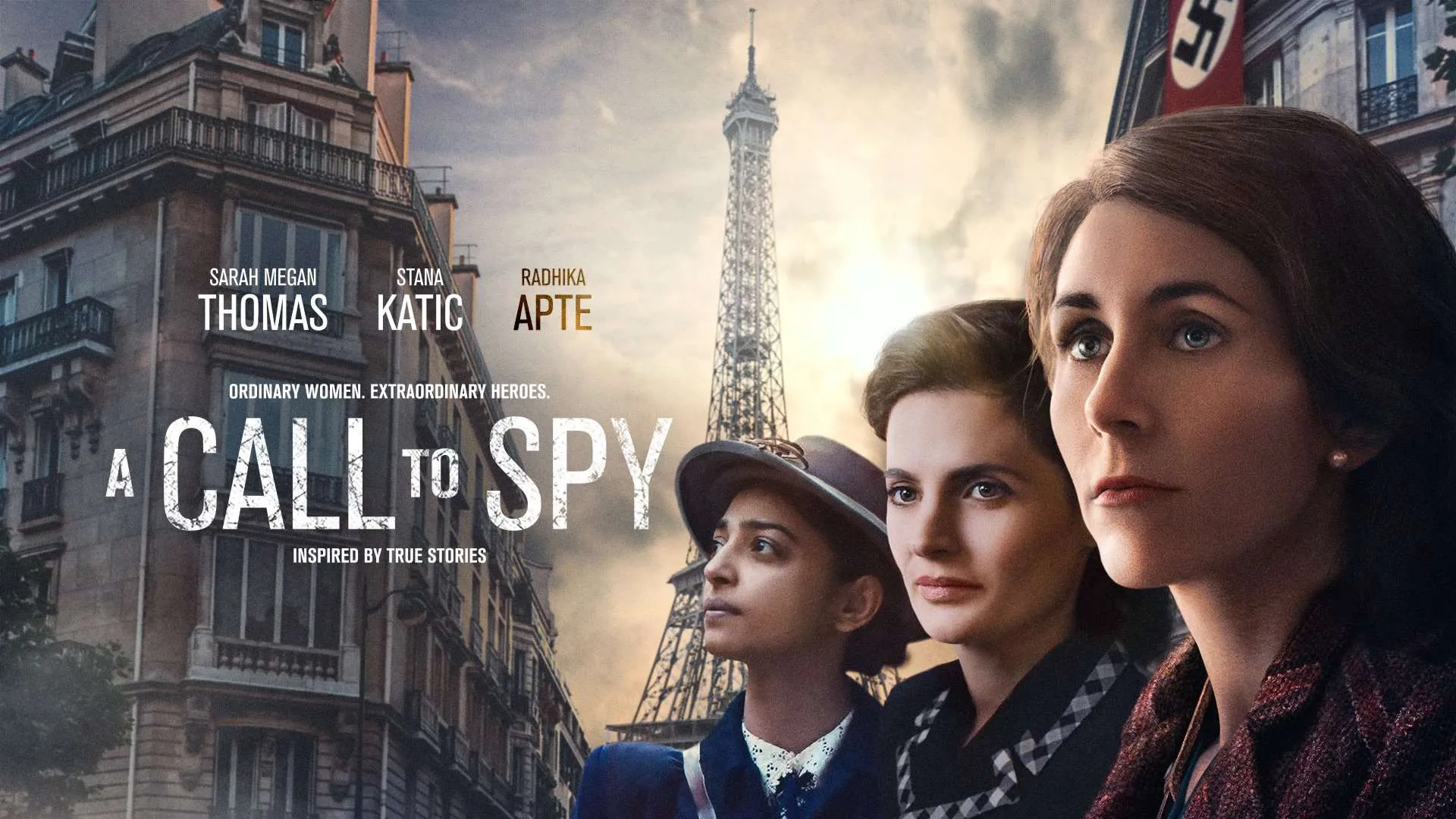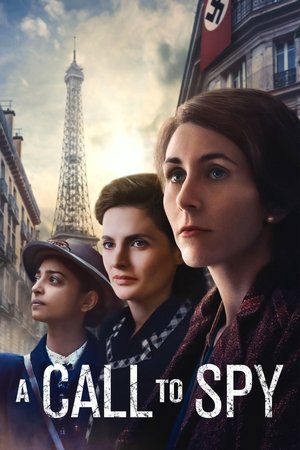Premiere at Edinburgh International Film Festival
A Call to Spy, originally premiered as Liberte: A Call to Spy, made its debut at the Edinburgh International Film Festival in 2019, coinciding with the seventy-fifth anniversary of D-Day. The film boldly advocates for the liberation of women in the arts, making a clear feminist statement. With a predominantly female cast and production team, A Call to Spy celebrates the skills and capabilities of women in various positions. It delves into the lives of three extraordinary women who courageously chose to join a spy team and immerse themselves in the treacherous world of Occupied France during the 1940s. Spanning 118 minutes, the film takes audiences on a rollercoaster ride through their four-year deployment, from recruitment to decommissioning. Buckle up for a fascinating journey!
Aspirations in the Face of War
A Call to Spy emphasizes that these remarkable women had aspirations and dreams in life before the war disrupted their trajectories. Virginia Hall, portrayed by Sarah Megan Thomas (known for Equity), aspired to become the first diplomat with a wooden leg. Noor Inayat Khan, played by Radhika Atpe (from The Wedding Guest), dreamed of being a Muslim pacifist children’s book writer. Vera Atkins, brought to life by Stana Katic (renowned for Castle and The Possession of Hannah Grace), yearned for a British identity and respect in an anti-Semitic Britain as a Jewish-Romanian. The war altered their paths, but ultimately for the better. These women are now immortalized as spymistresses who aided in undermining the Nazi regime in France, altering the course of history. The film’s remarkable depiction of female courage has garnered acclaim, evident from its accolades at the Santa Barbara Film Festival, Whistlers Film Festival, and the Alliance of Women Film Journalists.
Historical Accuracy and Fictional Liberties
While A Call to Spy draws inspiration from incredible true stories, it does take some liberties with historical accuracy. For instance, Noor Inayat Khan and Virginia Hall operated during different time periods in France, raising questions about whether their paths might have crossed. Although these narrative interconnections unite the three storylines, these historical inaccuracies diminish the film’s realism. Nevertheless, the film remains highly historically accurate in other aspects, albeit not in a manner easily discernible to the casual viewer.
exploring into Idiosyncrasies
When researching the various women depicted in the film, one might find seemingly disconnected conversations and actions among the characters suddenly clicking together. An instance of this is when an office clerk intercepts Noor’s transmission and becomes suspicious of the change in her “fist,” or typing style. This subtle detail alludes to Noor’s distinctive heavy typing, which inadvertently led to her reputation for making a couple of errors. Unfortunately, the scene fails to fully explore this fascinating aspect of Noor’s identity. Instead, it focuses on the superiors’ distrust of Vera Atkins when the office clerk’s concerns are validated. This missed opportunity hinders the individualization of the characters and their stories.
A Lack of Character Development
With a runtime of 118 minutes, there is limited space to fully explore the lives of these extraordinary heroines, resulting in a somewhat muddled story arc. Rather than showcasing their individual exceptionalism, the film tends to homogenize them into the singular role of “spymistress.” Consequently, character development suffers, and the audience fails to form an emotional connection with the protagonists, hindering our ability to empathize with their struggles in the latter half of the film. This deficiency stems not only from the lack of on-screen discussions of inner thoughts and emotions but also from the cinematography’s avoidance of showcasing their emotional turmoil.
Focusing on the Emotional Journey
While the intention behind minimizing the portrayal of “emotional women” on screen may have been to challenge stereotypes, it becomes disconcerting to witness heroic actions devoid of personal fears and worries, especially in a biographical film that closely follows these women. The film’s focus is divided, diluting the sense of danger and heroism they intend to convey. Only Vera Atkins’s storyline manages to express the despair and frustration she must have experienced, thanks to Stana Katic’s piercing gazes and heartfelt acting as she confronts blatant sexism in 1940s London.
Imbalanced Distribution of Action
A Call to Spy exhibits a disproportionately unbalanced distribution of action. While Virginia Hall sporadically engages in heroic deeds without proper context or purpose, Noor and Vera’s storylines struggle to compete dramatically. Consequently, the film fails to generate the tension one would expect from an espionage thriller. The inclusion of cliché Hollywood-style spy-thriller actions and the fast-paced nature of the majority of the film, which heavily focuses on Virginia Hall’s action-packed sequences, contribute to its lack of realism and believability. It seems the filmmakers were more invested in convincing the audience of the story’s importance rather than effectively narrating it. Although Sarah Megan Thomas, who portrays Virginia Hall, wrote and produced A Call to Spy, it represents a missed opportunity for director Lydia Dean Pilcher (known for Cutie & The Boxer and Radium Girls) to delve deeper into Noor’s and Vera’s narratives, which involve intriguing situations centered around service and identity.
Appreciating A Call to Spy
As a predominantly female production, A Call to Spy had all the potential to be a resounding success. If approached as a beautifully shot period drama focused on the lives of early 20th-century feminists, it delivers a satisfying viewing experience. It provides ample details and references to the personal lives of Vera Atkins, Noor Inayat Khan, and Virginia Hall, captivating those who possess a keen interest in their individual backgrounds. However, for individuals with little to no prior knowledge about these heroines of the Second World War, A Call to Spy may not fulfill their expectations in terms of learning more about these extraordinary women. Nonetheless, I thoroughly enjoyed watching the film and would consider revisiting it as a delightful (albeit slightly fictionalized) period drama. After all, who doesn’t appreciate a good feminist tale of “ungentlemanly warfare”?
FAQs:
1. Is A Call to Spy based on real events?
Yes, A Call to Spy draws inspiration from the lives of real women who played significant roles as spymistresses during World War II. While the film takes some narrative liberties, it remains rooted in historical events.
2. Are the characters in A Call to Spy accurate representations of the actual individuals?
A Call to Spy aims to portray the essence of the courageous women involved in espionage during the war. While some aspects might be fictionalized for storytelling purposes, the characters encompass the spirit and bravery of their real-life counterparts.
3. What awards has A Call to Spy received?
A Call to Spy has received recognition and accolades from various film festivals and organizations. Notably, it has garnered awards from the Santa Barbara Film Festival, the Whistlers Film Festival, and the Alliance of Women Film Journalists.
4. Is A Call to Spy historically accurate?
Despite some historical inaccuracies, A Call to Spy maintains a high level of historical authenticity. It provides viewers with valuable insights into the remarkable contributions of these spymistresses, even though certain elements have been fictionalized for dramatic purposes.
5. Where can I watch A Call to Spy?
A Call to Spy was released in UK cinemas on October 23, 2020, and subsequently made available on Digital HD on the same day. The film was later released on DVD on November 2, 2020. Currently, it can be watched worldwide on digital platforms and through on-demand services.


